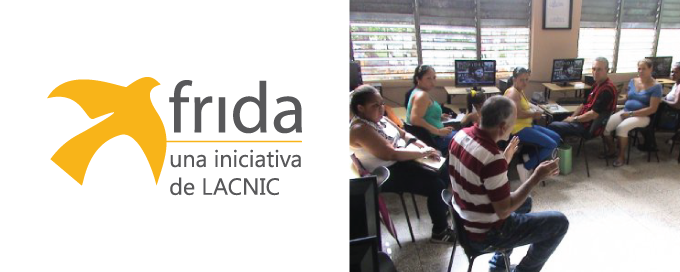Internet for the Development of Rural Communities in Cuba
29/09/2017

Created by Universidad del Oriente in Cuba, the Armonía project received one of the 2017 FRIDA Awards for its proposal to create digital learning materials for the local human development of rural communities in the Caribbean Island.
This initiative was developed in more than 20 Cuban rural settlements and sought to address the problems identified by the community through the use of information technology.
Gustavo Cervantes, who holds a PhD in Pedagogical Sciences and is responsible for the Armonía project, told LACNIC News that the proposal was designed for rural areas and seeks to favor underprivileged communities through the introduction of ICTs, particularly the Internet.
What is the Armonía project?
Armonía is a community development project for rural areas in the Santiago de Cuba province. In this case, community development is mediated by ICTs through the use of audiovisual media, multimedia and other digital learning materials. Social and educational contents are offered thanks to the participation of local residents and teachers and are based on social and educational issues. This work builds on the social and educational role of each school as the main cultural center for its community.
The Armonía project has gone through different stages which have allowed us to obtain the desired results. Its background is rooted in different projects executed since the year 2004, and its initial goal was to increase the general culture of residents through the use of Educational ICTs. Then, through the use of ICTs, in 2007 we began attempting to contribute to local human development and in 2013 we expanded to the local development of these highly underserved communities.
Where was this initiative developed and implemented?
The initiative was implemented in more than 20 rural settlements in the Segundo Frente municipality, province of Santiago de Cuba. Mangá, Boca de Mícara, Sabanilla, Soledad, Concepción, Aeropuerto and Los Lazos were the communities where the initiative had the greatest impact. This experience was also taken to more than 10 communities in the Palma Soriano municipality in the same province.
The initiative continues to be applied in other communities of the Segundo Frente municipality, always seeking to produce digital learning materials to disseminate rural traditions, particularly those involving agriculture and the production of the objects needed for subsistence farming and other activities in such rural areas.
Which digital learning materials were used to reach these rural communities? Did the communities participate in the creation of these materials?
Armonía is a project designed to benefit rural areas that have not benefited much from the introduction of ICTs, particularly of the Internet.
Different digital learning materials were used depending on the local history of each community. These products are designed for fifth and sixth grade primary school students and teachers, as well as for socializing with other members of the community. The digital learning materials consist of a compilation of the history of the community to be included in the teaching-learning process as well as in different community activities planned by each school.
Another issue addressed by the project was educational development. These digital learning materials contribute to enrich the knowledge of students, teachers and other members of the community. Through their use in teaching and other cultural activities, they also promote vocational training among children and young persons who may become interested in entering the field of education.
Large part of these materials deal with socio-political and cultural potential. The digital learning materials developed within the framework of this project covered topics such as environmental education, health and prevention, early childhood family education, the rural arts culture including rural museums in the municipality, and education on sexuality.
Residents played a major role in these materials, as they provided information that helped define the social and educational contents incorporated into the final products.
Why did you consider applying to the FRIDA Program?
Because the call for proposals was well-suited to what the Armonía project had achieved: theoretical and practical results with a social impact.
For several years, we had received local recognition and national awards endorsing both our work and the results of the project.
It was a way of motivating and bringing visibility to the work carried out by researchers with the participation of residents, directors, teachers, educational ICT specialists and students.
What are your expectations for your participation at the IGF?
The chance to create ties with other specialists and researchers working in ICTs for community development, particularly in rural areas. The forum also offers an opportunity to promote the potential for replicability of the Armonía project in other countries of the region and catch the eye of potential funders. Also, learning about different Internet Governance experiences in other countries which we could then incorporate into the project.
(Free access, no subscription required)